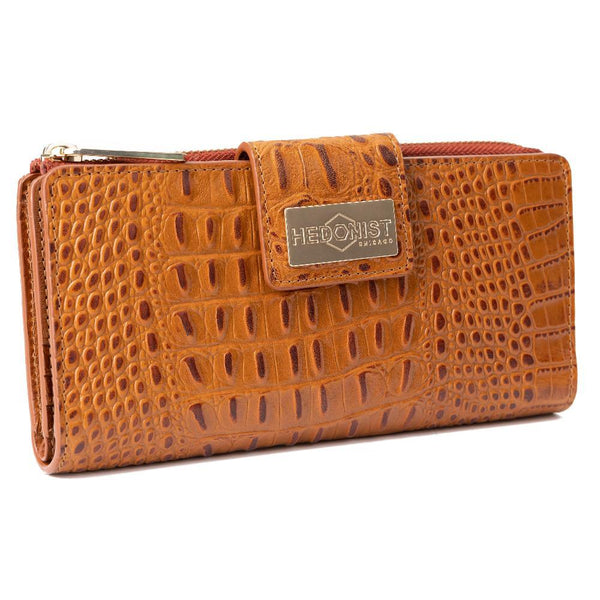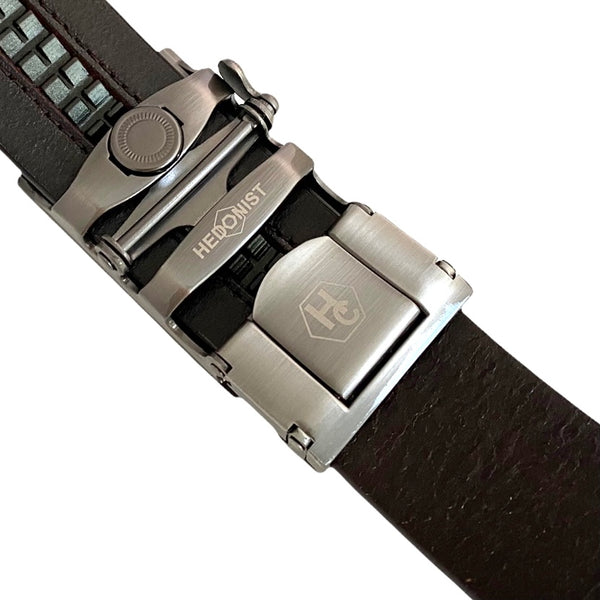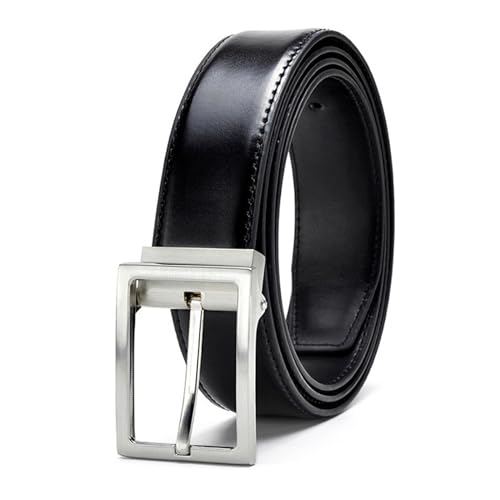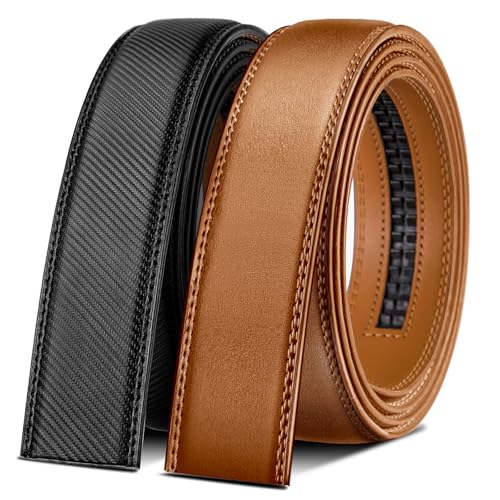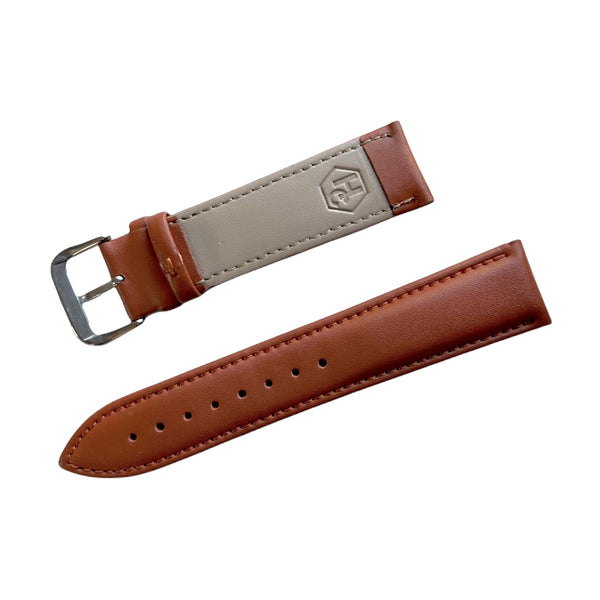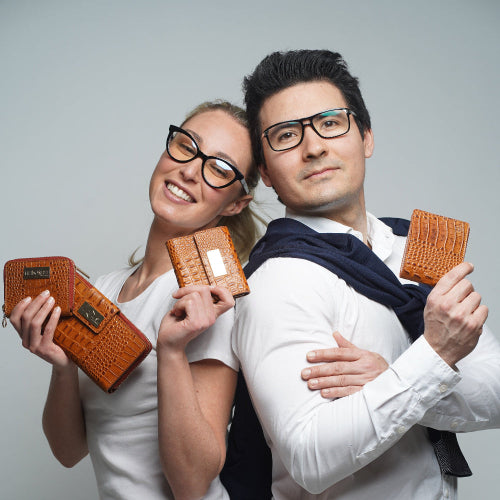Leather Treatments and Conditioners | Hedonist Chicago
Leather Treatments and Conditioners: How to Protect Your Leather Goods
Proper leather treatment isn’t just about appearance - it’s the foundation of preserving your leather goods for years to come. Whether it’s handmade leather accessories, leather belts, or everyday wallets, using the right leather conditioner and protective treatments makes a significant difference.
Why Leather Needs Treatment
Genuine leather is a natural material that ages and reacts to its environment. Over time, it loses moisture, accumulates dirt, and becomes vulnerable to cracking, stiffness, and discoloration. Without proper care, even high-quality leather can deteriorate prematurely.
That’s where leather treatments and conditioners come into play - helping restore oils, maintain flexibility, and extend the life of your item.
Understanding the Types of Leather Treatments
There are different categories of treatments designed for different purposes. Some focus on cleaning, others on conditioning, and some on protection. Let’s explore them.
1. Leather Cleaners
Before applying any conditioner, the leather must be clean. Use a soft cloth to wipe away surface dirt. For deeper cleaning, choose a pH-balanced cleaner or make your own by mixing one part white vinegar with two parts linseed oil. Always test on a small area first.
Avoid harsh soaps or alcohol-based cleaners - they can dry out and damage the leather.
2. Leather Conditioners
Conditioners are the most important part of the treatment process. They moisturize the leather, improve softness, and prevent cracking. Common leather conditioner ingredients include:
- Beeswax
- Lanolin
- Neatsfoot oil
- Natural plant oils
Apply conditioner using a soft cloth in a circular motion. Let it absorb for 15–30 minutes, then gently buff the surface. Repeat this every 3–6 months, or more often in dry climates.
✅ Browse our men’s leather wallets and women’s wallets - designed for durability and long-term care.
3. Waterproofing Treatments
Water can stain and deform leather. Use a waterproofing spray designed specifically for leather — usually silicone-free and breathable. Apply after conditioning for best results. Avoid waxy sprays unless you're treating rugged outdoor gear, as these can seal the leather and prevent it from breathing.
4. Leather Oils
Leather oils offer deep moisturization and are especially helpful for thick leather belts or handmade leather goods. Use sparingly, as too much oil can oversaturate and darken the leather. Best applied to older or extremely dry leather that needs intensive recovery.
How to Choose the Right Conditioner for Your Item
Different types of leather require different care. Here’s a quick guide:
- Full-grain leather: Use oil- or wax-based conditioners for rich nourishment
- Top-grain leather: Stick to light conditioners or sprays
- Suede or nubuck: Do not use traditional conditioners — use suede-specific sprays
- Patent leather: Avoid oils - use silicone-free polish to maintain shine
Common Mistakes When Conditioning Leather
- Over-conditioning: Applying too frequently causes buildup and stickiness
- Using wrong products: Household cleaners and baby wipes can strip leather
- Skipping cleaning: Dirt trapped under conditioner causes damage over time
- Exposure to sunlight after conditioning: Causes fading and drying
Always follow manufacturer instructions and store products in a cool, dry area.
Homemade vs. Store-Bought Leather Conditioners
Homemade solutions are affordable and effective - but they must be used with care. Vinegar-linseed oil mixtures are common, but not ideal for every leather type. Store-bought products are usually safer for beginners, especially those labeled “for fine leather.”
Test homemade recipes on a hidden spot and avoid if the leather reacts poorly.
Signs Your Leather Needs Conditioning
Watch for these indicators:
- Dry, stiff feel
- Cracking or flaking
- Loss of color or shine
- Visible wrinkles that don’t smooth when bent
These are your cues to act fast - condition before permanent damage occurs.
Can You Restore Damaged Leather?
Yes - to a degree. If the leather is simply dry or mildly cracked, conditioning can restore flexibility and appearance. Severe cracks or deep stains may require professional leather repair services.
🛠️ For minor restoration, apply multiple thin layers of conditioner over time, not all at once. Let the leather rest and rehydrate naturally between applications.
Best Practices for Long-Term Leather Maintenance
- Store leather items in breathable cotton bags, not plastic
- Keep away from heaters and direct sunlight
- Rotate usage - don’t overuse one item daily
- Clean and condition before seasonal storage
Explore our leather belts and handcrafted goods - easy to maintain, built to last.
Leather Treatment FAQs
Q: How often should I condition my leather wallet?
A: Every 3–6 months, depending on how often it’s used and your local climate.
Q: Can I use coconut oil or olive oil?
A: Not recommended. These oils can go rancid and may darken leather unpredictably.
Q: What if my belt gets wet?
A: Pat it dry with a soft towel. Let it air dry naturally. Avoid using heat sources to speed up drying.
Q: Should I treat personalized leather goods differently?
A: No - but be gentle around engraved areas. Learn more on our personalization page.
Conclusion: Invest in Long-Term Leather Care
The right leather conditioner and treatment routine will keep your wallets, belts, and accessories soft, durable, and stylish for years. A few minutes of care every few months go a long way - and your favorite pieces will thank you.
Start your leather care journey with Hedonist Chicago® - where lasting quality meets timeless design.
